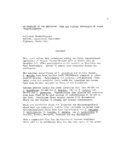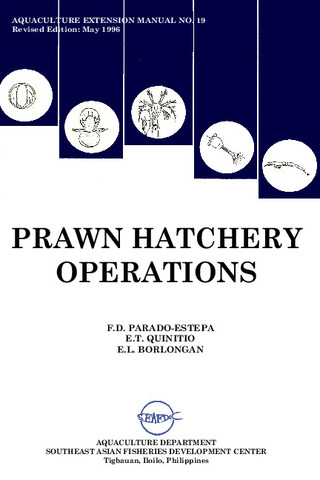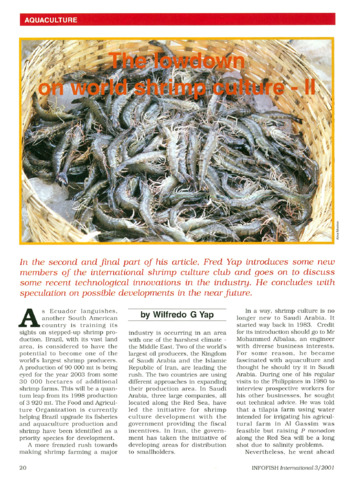Development of farming schemes following disease occurrences in monodon shrimp farming using intensive method in three Southeast Asian countries
| dc.contributor.author | Matsuura, Tsutomu | |
| dc.contributor.author | de la Peña, Leobert D. | |
| dc.contributor.author | Ean, Chee Phaik | |
| dc.contributor.author | Siow, Ryon | |
| dc.contributor.author | Alias, Ahmad Husin | |
| dc.contributor.editor | Matsuura, Tsutomu | |
| dc.date.accessioned | 2015-04-14T08:36:31Z | |
| dc.date.available | 2015-04-14T08:36:31Z | |
| dc.date.issued | 2007 | |
| dc.identifier.citation | Matsuura, T., de la Peña, L. D., Ean, C. P., Siow, R., & Alias, A. H. (2007). Development of farming schemes following disease occurrences in monodon shrimp farming using intensive method in three Southeast Asian countries. In T. Matsuura (Ed.), Sustainable Production Systems of Aquatic Animals in Brackish Mangrove Areas (JIRCAS Working Report No. 56) (pp. 43-52). Tsukuba, Ibaraki, Japan: Japan International Research Center for Agricultural Sciences | en |
| dc.identifier.issn | 1341-710X | |
| dc.identifier.uri | http://hdl.handle.net/10862/2179 | |
| dc.description | Also In K. Nakamura (Ed.), Sustainable Production Systems of Aquatic Animals in Brackish Mangrove Areas (JIRCAS Working Report No. 56) (pp. 127-134). Tsukuba, Ibaraki, Japan: Japan International Research Center for Agricultural Sciences | en |
| dc.description.abstract | All three countries experienced major progress in intensive shrimp farming at different ties. Intensive farming of monodon shrimp (Penaeus monodon, an indigenous species) was first launched by the Philippines, followed by Thailand, then by Peninsular Malaysia. The survey was conducted from 2000-2005. The disease-causing bacterial that seiously damaged monodon culture were luminous bacteria in the Philippines and white spot virus in Thailand and Malaysia. Production decreased because of these diseases in the mid-1990s in the Philippines and after 2000 in Thailand and Malaysia. In 1998, the Green Water System (hereinafter referred to as GWS) was developed, and a proportion of culture ponds introduced it and resumed monodon culture using the intensive method. In Thailand, the vannamei shrimp (Penaeus vannamei, an exotic species from South America) has now replaced monodon previously raised using the extensive method. In Malaysia, monodon is cultured using only the intensive method, and some culture pond enterprises started to culture vannamei instead of monodon in 2004. In the Philippines, companies engaging in monodon culture have many ponds and lower stocking density because they culture large-size shrimp, but are exposed to high running costs such as fuels and probiotics. On the other hand, in Thailand, individuals engaging in monodon culture have few ponds and higher stocking density since they culture small-scale shrimp. Labor costs are low because most of the work is done by family member. | en |
| dc.description.sponsorship | This study was conducted as a collaboration among the Southeast Asian Fisheries Development Center/Aquaculture Department (SEAFDEC/AQD) in the Philippines, Kasetsart University and SEAFDEC/Secretariat in Thailand, the Fisheries Research Institute (FRI) in Malaysia, and Japan International Research for Agricultural Science (JIRCAS). | en |
| dc.language.iso | en | en |
| dc.publisher | Japan International Research Center for Agricultural Sciences | en |
| dc.relation.ispartofseries | JIRCAS Working Report; No. 56 | en |
| dc.subject | Penaeus monodon | en |
| dc.subject | Penaeus vannamei | en |
| dc.subject | Philippines | en |
| dc.subject | Thailand | en |
| dc.subject | Malaysia | en |
| dc.title | Development of farming schemes following disease occurrences in monodon shrimp farming using intensive method in three Southeast Asian countries | en |
| dc.type | Book chapter | en |
| dc.citation.spage | 43 | |
| dc.citation.epage | 52 | |
| dc.citation.bookTitle | Comparative Analysis of Aquaculture Management in Brackish Mangrove Areas in Three Southeast Asian Countries | en |
| dc.subject.asfa | intensive aquaculture | en |
| dc.subject.asfa | costs | en |
| dc.subject.scientificName | Penaeus monodon | en |
Files in this item
| Files | ขนาด | รูป | View |
|---|---|---|---|
|
There are no files associated with this item. |
|||
รายการนี้ปรากฏใน (s)
-
Books and Book Chapters [117]




